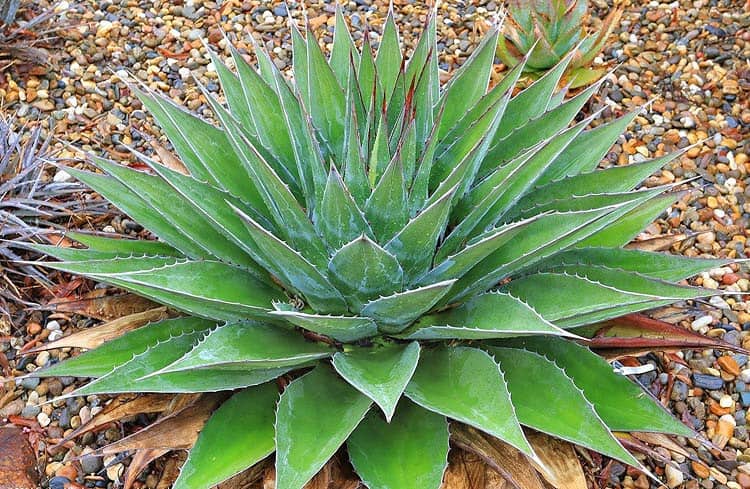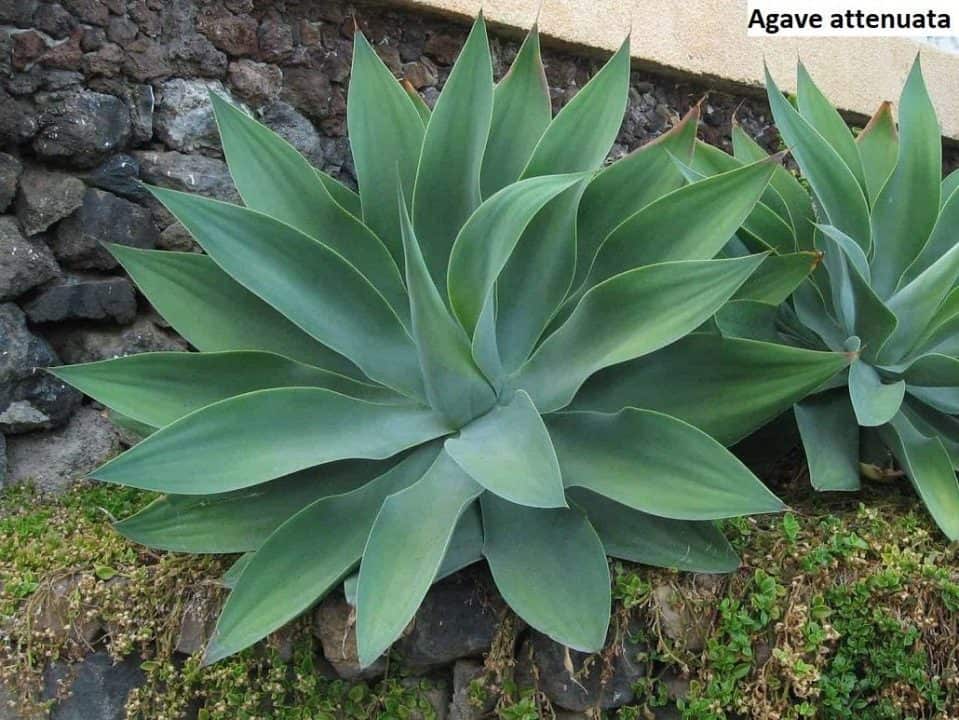Agave montana (commonly called mountain agave) is one of the most popular species of agave among home gardeners, partly because it’s fairly easy to grow and can even survive outdoors in U.S. Department of Agriculture plant hardiness zones 8 through 11, although growing it indoors is also an option year-round in colder climates.
The mountain agave (Agave montana) is one of the larger species of agave, growing up to 6 feet tall, with leaves that can grow as long as 8 feet. However, despite its large size, it’s easy to take care of, making it a popular choice among agave collectors.
Here are some of the best ways to care for your agave montana so that you can enjoy it in your garden or home for years to come.
Origin and distribution
Agave montana is native to Mexico and Guatemala. Although it prefers dry conditions, this succulent does not handle wet soil well and should be planted in well-drained soil.
It can thrive in full sun or partial shade and requires very little maintenance other than cutting back its browned leaves if they begin to look unsightly.
It is also grown in some parts of South America. The plant grows well in warm regions and can adapt to harsh conditions as well. However, it requires a minimum temperature of 60 degrees F for its growth.
The climate should be dry and should not have frost or winter rains. An agave plant can survive in any soil type and prefers sandy soils with good drainage properties.
Agave montana propagation
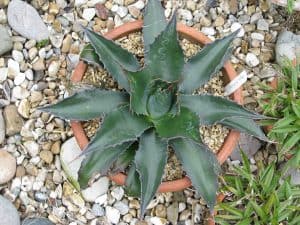
Because these Agave montana grows so slowly, propagation is not always necessary. But if you want to increase your numbers, divide off a section of your plant and replant it to give new plants. You can also reproduce them from seed or stem cuttings taken in spring or summer.
To propagate from seeds, collect mature seeds in autumn after they have fallen on their own. Soak them overnight before planting; they should germinate within three weeks.
To take stem cuttings, use a sharp knife to remove sections with at least two leaves per cutting; allow each cutting at least one month to form roots before transplanting into pots or soil outdoors.
It’s important to note that different species of agave may require slightly different growing conditions. Make sure you are giving your specific type of proper care!
Agave montana care information
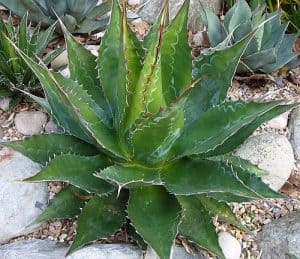
If grown outdoors, Agave montana prefers full sun but can tolerate part shade in warm climates. If grown indoors, place your agave in a west- or south-facing window with direct sunlight for at least 4 hours per day.
Allow soil to dry slightly between waterings. Fertilize with a 1/4 strength solution of balanced fertilizer once per month during the growing season, and once every three months during winter dormancy.
Light requirement
Agave montana is not as picky about light needs as many other succulents. It will do fine in medium-light conditions or even higher if there is a little bit of direct sunlight. However, it will also adapt to lower light areas and can handle some shade, provided that temperatures remain warm enough.
Don’t expose them to direct sunlight during the summer months! If you grow your agaves outside, try to provide them with partial sun exposure during spring and fall, while moving them into full sun exposure when winter comes around.
If grown indoors, make sure they get at least 3-4 hours of bright indirect sunlight every day. In addition to natural light from windows, you can supplement your agaves with artificial lighting for up to 18 hours per day.
Soil/potting mix
Agave montana requires porous soil that drains well. If you’re using a commercial potting mix, make sure it contains drainage holes and is formulated to work with succulents. Cactus and succulent potting mixes or amended soil are ideal. Don’t use garden soil as a substitute, though; it’s heavy and will hold too much water.
And avoid potting soils containing vermiculite, it doesn’t drain well and can cause root rot in agaves. If your container doesn’t have drainage holes, you can drill some into it before adding soil, but be careful not to make them too big or they may allow roots to escape.
In general, choose a container that has at least one gallon of space for every inch of plant height.
Watering
Agave montana benefits from a well-draining soil mix with an even amount of sand and peat moss. They do best in areas where they can dry out between waterings. Place agaves in a bright, sunny spot and make sure they never sit in standing water.
The soil should be kept consistently moist, but not soggy. Water your agave when it feels light or begins to droop at its base. Never leave your agave sitting in water for long periods of time as rotting may occur. If you’re unsure about how much water to give your plant, use a moisture meter to test the soil’s moisture level before watering.
A good rule of thumb is that if you stick your finger into wet soil up to halfway and it doesn’t feel damp, then you should probably give it some more water.
Fertilizer
Agave montana needs to be fed with manure every year. It should not be fertilized in its first or second year when it’s getting established. After that, you can apply a balanced fertilizer once a month from March through September.
Use one-quarter of what is recommended on the label for other plants in your garden. If you’re using organic fertilizer, make sure it has a high amount of nitrogen; otherwise, your plant won’t grow as quickly as you want it to.
Temperature
Montana agave plant preferred temperature range is from 65 to 70 degrees Fahrenheit during its active growing season. However, agaves can tolerate much warmer conditions than that.
If you live in a warmer climate and are looking for something with a more tropical look, consider an agave like Agave parryi or Agave deserti. These varieties are very hardy and can tolerate warmer temperatures outside during their active growing season.
Humidity
The moisture in your plant’s environment can make or break its health. It must remain above 60% humidity to flourish, but few locations can meet that requirement naturally. If you live in a dry climate, it may be wise to invest in a humidifier for your agave.
You may even need to consider placing plants on a tray filled with pebbles and water and sitting that tray atop an under-desk humidifier. Just be sure you don’t overwater them!
The ideal humidity range for Montana agave plants is between 60 and 80%. If you have a humidity gauge, it should read between 70 and 80% when your plant is in a well-lit area.
Pruning Agave montana
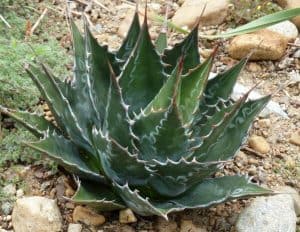
Regular pruning helps keep Mountain Agave healthy and looking good. Prune at least once a year after it flowers in summer or early fall before growth begins in spring. Clean up dead leaves to reduce pests and diseases.
If you live in an area with cold winters, cover your agave with a blanket or burlap during cold spells. In warm climates where frost is rare, it’s best to leave your agave uncovered; covering it could cause rot. If you grow more than one agave plant together, cut them back by half so they don’t compete for resources.
When to repot
Repotting Agave montana should be done at least once a year to provide them with fresh soil and ensure their root systems are healthy. If you leave your plant in its original pot for too long, its roots can get waterlogged or overly dry, either of which can harm your plant.
When repotting an agave, use only well-draining soil that’s high in organic matter. Make sure that you don’t add any fertilizer to your new potting mix; instead, feed your plant with diluted fertilizer every two weeks after repotting.
Dormancy
If your agave is outdoors, be sure to bring it in before temperatures drop below 60°F. If you’re growing agaves indoors, they will spend most of their time dormant. During dormancy, you can still water your agave lightly and let water drain from its base.
Do not fertilize at all during dormancy! You should also avoid touching or moving a dormant agave; handling an agave may cause permanent damage to leaves and stems when it awakens from dormancy.
Agave montana flower & fragrance
When agave montana bloom, they are spectacular. Native to Mexico and Guatemala, mountain agaves bear yellow flowers that reach heights of up to 6 feet. The scent of mountain agave flowers is sweet and floral yet somewhat musky.
It is also notably more pleasant than its relative, the giant century plant, which has a scent reminiscent of dead mice! A single flower lasts for only one day; once it’s gone, its pith quickly swells into tasty fruit.
Growth rate
Agave Montana grows between 20 to 30 cm per year. This is a slow growth rate, especially for an agave. It’s important not to feed or water an agave too much otherwise it will grow too fast and die before it can flower.
It’s best to make sure that you know what you’re getting into before deciding on an agave Montana for your home – mountain agaves require more specialized care than some other varieties of succulents.
Toxicity
The sap is highly toxic and will cause contact dermatitis. Do not use it on broken skin. Wash thoroughly with soap and water after handling. Avoid direct contact with eyes, mouth, or open wounds. If eye contact occurs, flush with copious amounts of water for 15 minutes and consult a physician immediately.
USDA Hardiness Zones
Agave montana thrives in USDA hardiness zones 9 and 10. In colder climates, you can protect your agave by bringing it indoors during cold weather or by planting it in a container that can be moved indoors when necessary.
If you’re growing agave montana as a houseplant, look for one with variegated leaves. These plants are more tolerant of indoor conditions than those with green leaves.
Pests and diseases
Agave montana can be a magnet for pests. Aphids, snails and slugs, mealybugs, scale insects, and spider mites are common. They like to hide in crevices so check along leaf edges, among the foliage, and under leaves for signs of infestation.
Treat with insecticidal soap or horticultural oil spray as soon as you see signs of pest activity. Repeat at weekly intervals until no more activity is observed.
Conclusion
As a succulent, agave montana is drought-tolerant and easy to care for. Water it once a month in warmer months, or only water it when you notice its soil getting dry.
Don’t forget to allow your agave’s soil to dry before watering again, if you over-water it will die. Enjoy your agave! It does well indoors or outdoors but may need protection from frost in colder climates.
